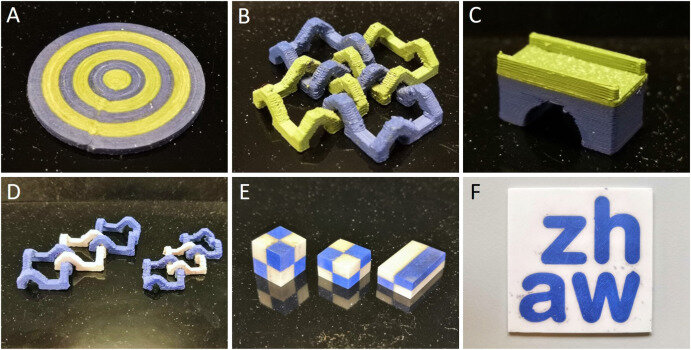Multi-material ceramic material extrusion 3D printing with granulated injection molding feedstocks
14.12.2022The new material extrusion (MEX, also known as FDM) 3D printer works with granulated feedstocks which are produced by filling thermoplastic binders with high loads (>50 vol%) of ceramic powders. The same feedstocks are used for ceramic injection molding (CIM), making the switch from prototyping by 3D printing to commercial large scale injection molding very straightforward. In their recent paper, the scientists at IMPE (René Wick-Joliat, Martina Schroffenegger, Dirk Penner) demonstrate ZrO2 parts with two different colors or high-temperature heating elements consisting of electrically conductive and non-conductive components. The team is excited to find and test new applications of multi-material ceramic parts with complex shapes.
Abstract
Material Extrusion (MEX) is an advanced technology for polymer 3D printing and countless printers are commercially available. MEX has also been demonstrated for ceramics. For that purpose, thermoplastic binders are filled with high loads (>40 vol%) of a ceramic powder. The printed parts are subsequently debound and sintered. In contrast to most MEX printers, the ceramic printer presented herein works with granulated feedstock instead of filaments. Therefore, the development of novel feedstocks is faster and more straightforward since the challenges associated with filament production are omitted. Furthermore, commercial ceramic injection molding (CIM) feedstocks can be used which allows fast prototyping with the same material that is later used in high-quantity industrial production by CIM.
